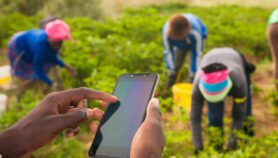Send to a friend
The details you provide on this page will not be used to send unsolicited email, and will not be sold to a 3rd party. See privacy policy.
[SANTIAGO] A study has cast doubt on the innovative role that some claim Twitter, the ‘microblogging’ social media tool, can play in generating new information during disasters, although it did find that ‘tweets’ speed up the exchange of existing information.
An analysis of tweets sent by people in the United States following the emergency at Japan’s Fukushima Daiichi nuclear power plant found that most linked to traditional news outlets, such as the New York Times and CNN, for updates.
"Since tweeters clearly did not have the expertise [on radiation] nor could they find others on Twitter or in the blogosphere who did, they relied on traditional news media," study author Andrew Binder, at the department of communication at North Carolina State University, United States, told SciDev.Net.
The paper, to be published in the June edition of Environmental Communication, shows changes in the quantity and content of 2,359 tweets from the United States on the nuclear emergency in the two weeks after 11 March 2011, when the disaster was first reported.
About 17 per cent of tweets put events into a wider context, but rarely mentioned risk — only 15 per cent of tweets referred to risk, hazard or exposure.
And references to risk in tweets decreased over time, which is "troubling", according to Binder, "because the subjective perception of risk decreased much faster than the measurable, objective risk, that is, exposure to radiation".
He concludes that Twitter did not alter what was communicated — the changes over time in the quantity and content of messages were almost the same as those found by studies on the coverage of hazard events in traditional media.
But Adam Acar, associate professor of communication at Kobe City University of Foreign Studies, who co-authored a 2011 paper on how Japanese people used Twitter after the earthquake and tsunami last year, found it does have power locally.
"Social media did change the way we communicate and the speed of information dissemination," he told SciDev.Net.
Acar and colleague Yuya Muraki studied a sample of 300 tweets sent in the two weeks after 11 March in their paper, published in the International Journal of Web Based Communities. Twitter was one of the few functioning communication tools in the earthquake-affected areas, and inhabitants said it was useful for locating food, water and shelter after the disaster, according to Acar.
Most of the tweets from within disaster areas were warnings, pleas for help, and information about events such as the rise and fall of the sea and fires. Tweets from users in other areas were also about such events, as well as condolences and assurances about their safety.
The Twitter accounts of official authorities were particularly useful and were "retweeted extensively, especially when warnings of an imminent tsunami were predicted", the researchers wrote.
But while official accounts were useful, they were not updated regularly enough to clear up confusion.
And Acar told SciDev.Net that they found numerous unreliable tweets where users repeated inaccurate information.
Marcelo Mendoza and colleagues from Yahoo Labs Latin America in Santiago, Chile, examined the responses to true and false information in tweets send in the two weeks following the earthquake in Chile in 2010. They found that rumours tended to be questioned by other tweeters more than tweets that spread factual news.
"Statistical learning methods [developed to predict the credibility of Twitter for automatically detected trending topics] are able to infer the level of veracity of tweets, allowing many to be discarded. The method could be used in microblogging platforms that could, for instance, warn people that many other users are questioning the information," Mendoza told SciDev.Net.
Twitter has more than 200 million users worldwide and around 95 million tweets are shared every day.
Some government agencies around the world have turned to Twitter to communicate with the public and its supporters say its wide scope and open access make it an effective and cost-efficient means to communicate and make public announcements.
Link to abstract in Environmental Communication
Link to abstract in International Journal of Web Based Communities
Link to paper by Mendoza and colleagues ![]() [3.99MB]
[3.99MB]
Additional reporting by Joel D. Adriano.
References
Environmental Communication doi: 10.1080/17524032.2012.672442 (2012)
International Journal of Web Based Communities doi: 10.1504/IJWBC.2011.041206 (2011)













